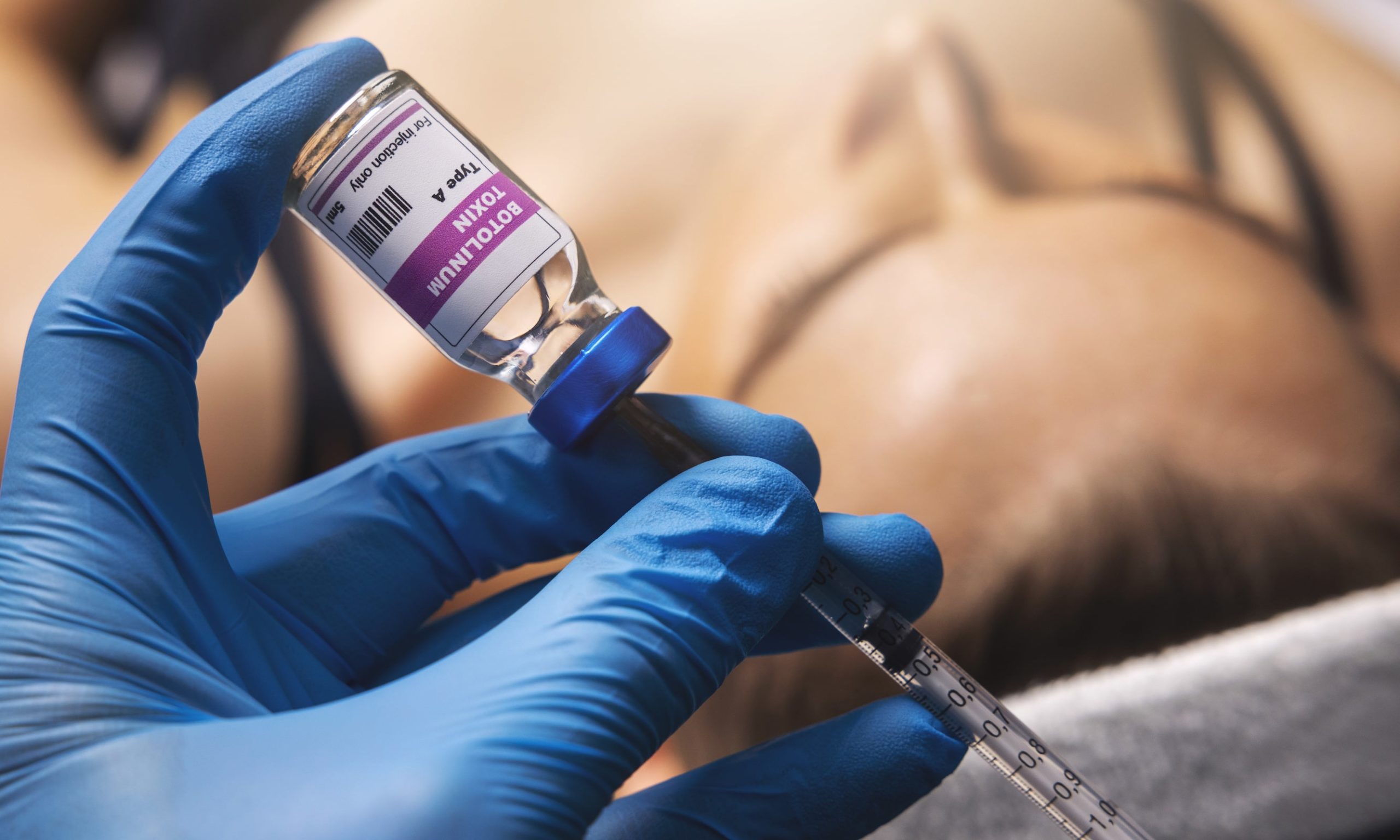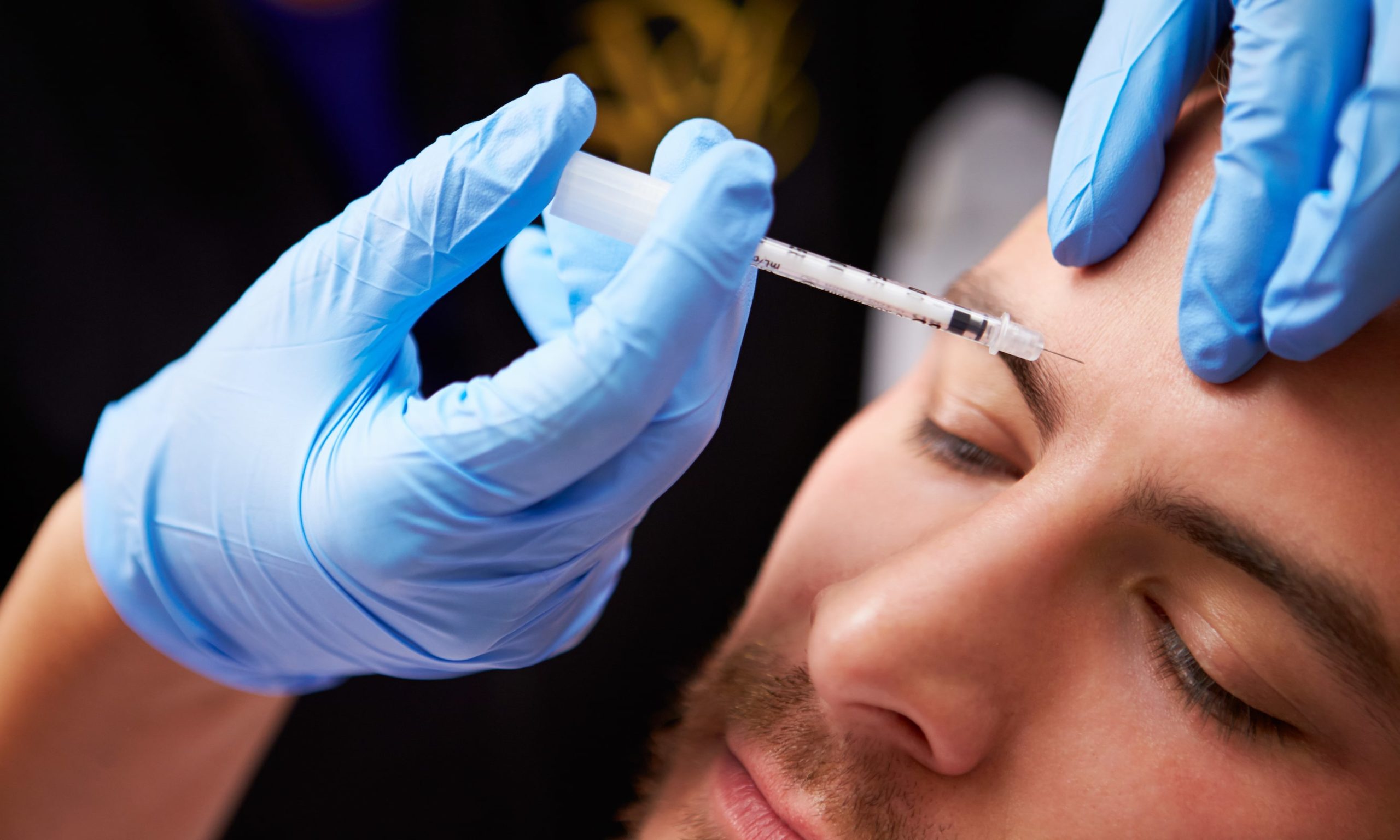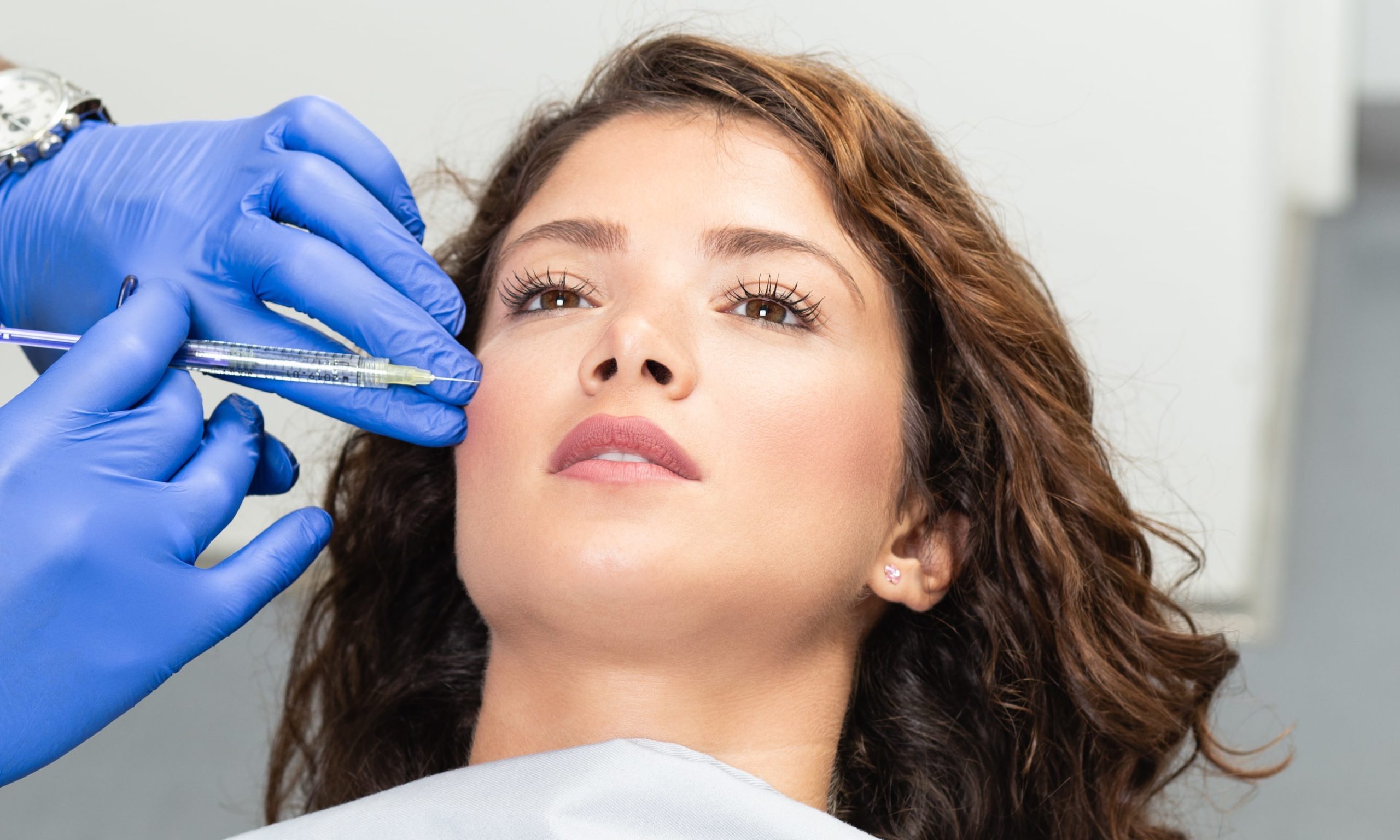In 2019, the global market for botulinum toxin (BoNT) reached an estimated value of $4.83 billion. Come 2027; experts project it to expand further to become a $7.71 billion industry by 2027.
Those figures prove that BoNT injections are among the most popular non-surgical treatments.
Dysport and Botox, in turn, are two of the most well-known names in the BoNT market. However, while both use BoNT type A, they still have some characteristics that set them apart.
If that’s the case, what is the difference between Botox and Dysport then? Does Dysport last longer than Botox, or is it the other way around? What about Dysport vs. Botox pricing, safety, and efficacy?
We’ll have all those questions answered in this guide, so please be sure to read on.
What Are Botulinum Injections and How Do They Work?
Botulinum injections contain neuromodulators made by a bacterium known as Clostridium botulinum. Neuromodulators are substances that alter the nervous system’s functions or structures. For example, they disrupt nerve signals, thereby causing muscle paralysis.
Now, that may sound concerning, but don’t worry. When developing BoNT injections, manufacturers only use tiny amounts of botulinum toxins. They also dilute and sterilize the substances to ensure they won’t cause toxicity.
In addition, the small doses only cause targeted and temporary muscle paralysis. That’s why the injections should only affect the treated areas and not the entire body. However, this is also why you need to choose a licensed, experienced Botox or Dysport provider.
Once injected, the drug causes a temporary blockage of nerve signals to the muscles. This then leads to the treated muscles being unable to tense up or contract. Instead, they become paralyzed or weak.
That’s how Dysport and Botox work to smoothen out facial wrinkles. However, they only have temporary effects, which means they last only for about a few months. Fortunately, it’s safe to get additional treatments to sustain their effects.
What Is the Difference Between Botox and Dysport?
One of the key differences between Dysport and Botox is the strain of botulinum toxin they use. They also differ in potency, and thus, administered dosages. In addition, although they have similar indications, Botox has more approved uses.
Botulinum Toxin Type A Strain
Dysport is the brand name for the botulinum toxin type A known as abobotulinumtoxinA (ABO). Botox, on the other hand, is the brand name for onabotulinumtoxinA (ONA). Rest assured, however, that both of them use purified botulinum toxins.
The Difference in Potency
According to researchers, Botox appears to be more potent than Dysport. For example, some estimates place a single Botox unit to have three times the potency as one unit of Dysport. Others compare the potency of one unit of Botox to four units of Dysport.
Dosage Difference
The dosages for Botox and Dysport are product-specific. Practitioners never interchange them, as they have different potencies, after all.
For Botox Cosmetic, a single-use vial contains either 50 or 100 units of the ONA formula. The specialist then dilutes this with sodium chloride before injecting it.
By contrast, a Dysport vial contains either 300 or 500 units of the ABO solution. Like Botox, though, it also requires dilution prior to administration.
To patients, what that means is that more dosage units of Dysport may be necessary. That’s because its formula is more diluted than that of Botox. As such, if you choose Dysport, your treatment may involve using more Dysport units.
Approved Indications for Dysport
In the US, Dysport first received approval from the Food and Drug Administration in 2009. The agency approved it for two different indications.
One was for Dysport’s use to treat moderate to severe glabellar lines. However, the approval limited its use to adult patients younger than 65 years old.
Glabellar lines are more commonly known as frown lines or the “eleven lines.” These are the vertical creases that form between the eyebrows. They result from repetitive facial expressions such as frowning or scowling.
The other indication was for Dysport’s use in treating cervical dystonia (CD) symptoms. The FDA approved its use for CD to reduce neck pain and severe abnormal head position.
In 2015, the FDA also approved Dysport for treating upper limb spasticity. The following year, the agency did the same for lower limb spasticity in kids two years or older. Then, in 2017, Dysport received approval for use in adult lower limb spasticity.
Approved Indications for Botox
Botox has a longer history than Dysport, having received its first approval in 1989. Back then, the FDA approved it for two eye disorders: blepharospasm and strabismus. Eleven years after, in 2000, the drug received approval for its use as a CD treatment.
Then, in 2002, the FDA approved Botox for moderate to severe glabellar lines in patients under 65.
Since then, Botox has gained FDA approval for several other conditions. These include the following:
- Severe primary axillary hyperhidrosis (severe underarm sweating)
- Upper and lower limb spasticity
- Chronic migraine
- Urine leakage resulting from an overactive bladder due to a neurologic disease
- Overactive bladder symptoms
- Moderate to severe lateral canthal lines (crow’s feet)
- Pediatric detrusor activity associated with a neurologic disorder
As you can see, Botox has far more approved cosmetic and medical uses than Dysport. One possible reason is that Botox has been around longer than the other.
Does Dysport Last Longer Than Botox?
Now that you know how they differ, let’s go to the next question, “Dysport or Botox, which lasts longer?”
Based on study findings, it seems that Dysport’s effects last a little shorter than Botox. For example, one review looked at the duration of the results of both BoNT injections. The researchers compared the results of studies on patients treated for glabellar lines.
One of their findings was that the average retreatment interval for Dysport was 3.9 months. In comparison, Botox results, on average, lasted 3 to 5 months in women and 4 to 6 months in men.
In addition, the researchers compared Dysport vs. Botox relapse rates. They found that 40% of patients who had Dysport had a relapse at week 16. By contrast, only 23% of patients treated with Botox relapsed 16 weeks after treatment.
Moreover, according to MedlinePlus, patients may need extra ABO shots after 3 to 4 months. However, the publication also mentions that this depends on the patients’ condition. Another factor is the treatment site itself.
As for Botox, MedlinePlus stated that it could last for three to twelve months. Once again, this depends on the treatment site. Still, it does indicate that Botox may last longer than Dysport.
So, Is Dysport Cheaper Than Botox?
Yes, Dysport often costs less than Botox per unit. For example, an earlier study found that Botox cost an average of $525 for each 100-unit vial. On the other hand, Dysport’s average cost only amounted to $475 for a 300-unit vial.
Moreover, researchers discovered that some patients saved more when they chose ABO injections. In their study, they found that ABO injections had associated cost savings of CAD 123. However, note that this study was for lower limb spasticity in Canadian children.
Ultimately, though, your cost would depend on, say, the depth or severity of your frown lines. The specific provider you choose can also drive your overall treatment expenditures.
Is One More Effective Than the Other?
In some studies, Dysport and Botox seem to be equally effective in minimizing frown lines.
For example, a 2016 study asked patients how they felt and looked after the treatment. The patients received either Botox, Dysport, or a third brand of BoNT injection. Regardless of the brand, the patients said they believed they looked an average of 5.6 years younger.
As for customer satisfaction, Dysport has also garnered high ratings.
In one Dysport study, the reported satisfaction rate after three months was 86.5%. After the treatment, the static frown lines in 88.5% of patients disappeared after 30 days. It also caused the disappearance of mechanic frown lines in 85.6% of patients.
There is a possibility, however, that Dysport may work faster than Botox. In one trial, the researchers noted that the median initial onset of ABO injection was 12 hours. As for ONA, it was 28 hours.
The same trial found that the complete onset of the effects occurred four days for ABO. By contrast, it took eight days for the ONA injections. In addition, patients who had ABO shots reported feeling less pain than those who got ONA shots.
Another possible advantage of Dysport lies in its consistency. Because it is more diluted, it can spread to a wider area, such as the forehead. For this reason, it may be more effective in treating more forehead lines than Botox.
The concentration of Botox, on the other hand, makes it stay near the injection site. As such, it may be a better option for smaller target areas, such as around the eyes.
What About Their Safety Profiles?
As Botox has been around longer, it has a well-documented safety and efficacy profile. Otherwise, the FDA wouldn’t have approved it for a dozen indications. The same goes for Dysport since it’s also a recipient of FDA approval.
However, there are some cases wherein Botox and Dysport can still cause side effects. Fortunately, they’re only temporary and minor and usually disappear after a few days.
One of the most common side effects of BoNT injections is bruising. The good news is that researchers say only about 11% to 25% of people who get BoNT treatment experience this. Other temporary side effects are headaches, as well as swelling and pain at the treated site.
So, Does That Mean Botox and Dysport Cause Downtime?
No, in most cases, they don’t, and their procedure only usually takes a few minutes. That’s why some people even call them “lunch-break treatments.”
Moreover, as mentioned above, most of the side effects are minimal, so you can go back to work after. Your provider may ask you to avoid strenuous activity, though, at least for a day. This includes exercising, as these activities may force you to move your facial muscles a lot.
Lastly, please bear in mind that other reactions, such as headaches or dizziness, may occur. Although not very common, you should still let your provider know right away. If this happens, avoid driving a car or operating machinery.
Is It Safe to Get Botox or Dysport and Dermal Fillers In One Session?
In many cases, you can get medical spa services, such as BoNT injections and dermal fillers, at the same time. That’s because dermal fillers contain different substances than Botox or Dysport. Some of the most popular dermal fillers, including Restylane, use hyaluronic acid (HA).
Like Botox and Dysport, HA dermal fillers are also injectables. However, they don’t cause temporary paralysis; instead, they only fill in wrinkles. The body then metabolizes the filler after some time, usually within a few months.
Since their fundamental actions differ, their simultaneous use is often safe. Besides, experienced practitioners always carry out a comprehensive checkup before giving you anything. This helps ensure you are a good candidate for dual treatment.
What if you also want to get other spa services, though, such as facials? In this case, it may be best to get them several days before or after BoNT injections.
One reason is that extra pressure on treated spots may cause Botox or Dysport to migrate. If this happens, the BoNT solution may spread to the other tissues around the injected areas. This can then lead to the nearby muscles experiencing temporary paralysis, too.
Use This Botox vs. Dysport Guide to Make a More Informed Decision
There you have it, your ultimate answer guide to the question, does Dysport last longer than Botox? Now, you know that while it may not last as long as Botox, it still has some advantages. For instance, it may cost less and be more suitable for areas like the forehead.
Still, the best way to decide between the two is with the help of an experienced practitioner.
If you live in Naples or around Southwest Florida, our team here at RRR Med Spa can give you the guidance you need. Please don’t hesitate to reach out to us by calling (239) 351-7796 or setting an appointment online.




